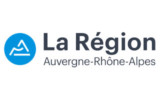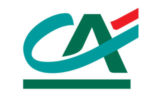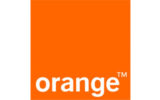RTE uses NegaOctet to measure the environmental balance of its connected network sensors
RTE, the French Transmission System Operator, has now implemented eco-design in all its businesses and projects, to reconcile the digital and environmental transitions. RTE was therefore one of the first companies to use NegaOctet, a repository for assessing and reducing the environmental impact of digital services, to measure the environmental balance of network sensors designed to optimize the transmission and use of electricity. An update from Mike Nunes, LCA and eco-design engineer at RTE, in a situation where the quest for efficiency is more topical than ever.
How do digital services add value for RTE?
RTE manages and maintains Europe’s largest electricity transmission network. As the guarantor of a continued electricity supply, we are implementing more and more digital services to control electricity transmission in real time, connect the different methods of electricity production and consumption (nuclear, gas, coal, oil, hydraulic, wind, solar and bioenergy) and maximize the use of the existing network.
For all the digital solutions we deploy, we are committed to the search for efficiency, and have made eco-design a general practice in order to limit their environmental impact.
In what situation did you use the NegaOctet repository?
Our pilot project has been set up for the DLR (Dynamic Line Rating) system: thanks to sensors installed on overhead power lines, it enables the transmission capacities of the lines to be increased in real time according to weather conditions. This innovation is particularly relevant in view of the increasing share of intermittent renewable energy sources in the electricity mix.
We wanted to assess whether the environmental benefits of this system outweighed its environmental impacts. We therefore carried out a Life Cycle Assessment (LCA) to evaluate its positive (or avoided) impacts and its negative impacts. To carry out this LCA, we in particular used the methodology and data specific to digital services in the NegaOctet repository, supported by ADEME. We felt it was important to use data specific to this type of service, taking into account the equipment, network and infrastructure of the data center. This is one of NegaOctet’s strengths when it comes to carrying out this type of life cycle assessment.
What are the positive environmental impacts of the DLR system?
We measured the environmental impact of the DLR system on two power lines. On one of the lines (case 1), the LCA showed that the system avoided the annual production of 2,880 MWh of electricity from combined-cycle gas turbines, most of which was replaced by nuclear-generated electricity. On the second line (case 2), the DLR system is expected to feed an additional 570 MWh of wind-generated electricity back into the grid in one year.
The DLR system, via the sensors installed and the digital processing carried out, therefore provides an ecologically positive service. What about its own environmental impact?
The NegaOctet repository has shown that the majority of the DLR system’s negative impacts are linked to the manufacture of the data center equipment and sensors, as well as their installation, based on greenhouse gas emissions, the most robust indicator known to date.
Overall, how did NegaOctet enable you to measure the environmental balance of the DLR system?
Comparing the positive and negative impacts on the GHG indicator, we observe a factor of around 1,500 between the negative impact of the DLR system and the impact avoided for case no. 1. In other words, for every kg of CO2eq emitted by the system (for the manufacture of the sensors and data center equipment), around 1,500 kg are avoided (substitution of 2,880 MWh of electricity from combined-cycle gas turbines by nuclear power). For case no. 2, the factor is 289 (use of 570 MWh of additional wind-generated electricity per year).
However, the NegaOctet repository is not limited to carbon indicators alone. For example, in case no. 2, while the impact of the DLR system on GHG emissions and soil acidification is clearly favorable, we nevertheless noted a negative balance on resource and water consumption.
Thanks to NegaOctet, we were able to carry out an exhaustive environmental balance of this digital service, and found that its environmental gains far outweighed its negative impacts.




















